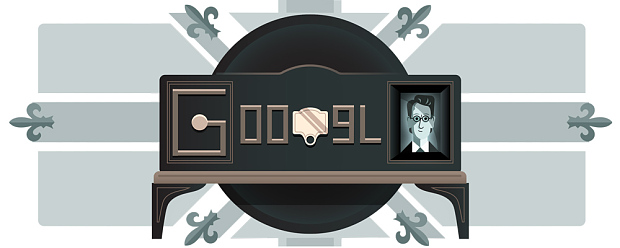Google doodle marks 90th anniversary of 1st live demo of mechanical TV by John Logie Baird

It was a far cry from the high definition, retina-busting gadgets of today, but with its latest doodle Google is marking how 90 years ago on Tuesday (26 January) saw the unveiling of something that was the height of technology in 1926, the mechanical television set.
It was on this day that the first public demonstration of live television took place. The screen showed the face of Daisy Elizabeth Gandy who was the business partner of John Logie Baird, the Scottish inventor who was a pioneer of the mechanical television.
The original contraption was also known as a "televisor" and was a bit like a radio but with a rotating mechanism that could generate video as well as sound. In fact Baird's first breakthrough came in 1924 when he managed to transmit a flickering image across a distance of 10 feet (3m).

The difference this time round was that in a lab in Soho, London, in front of an audience from the Royal Institution and a journalist from the Times, he managed to broadcast an image of someone who was in a different room.
The images were small, only 3 by 2 inches (7.6cm by 6cm), but within three years, the first mass-produced television sets were on the market.
After the 1926 display, Baird continued to develop the mechanical TV and in 1927 he transmitted content across a 438-mile long (705km) telephone line between London and Glasgow. He went on to set up the Baird Television Development Company, which produced the first transatlantic broadcast and the first live transmission of the Epsom Derby.
From 1929 until 1937, the BBC used Baird's company for its television broadcasts but the mechanical TV was surpassed by the electronic television in the 1930s.
The Google doodle depicts Baird with his mechanical television, commemorating his contribution to technological history.
© Copyright IBTimes 2025. All rights reserved.






















